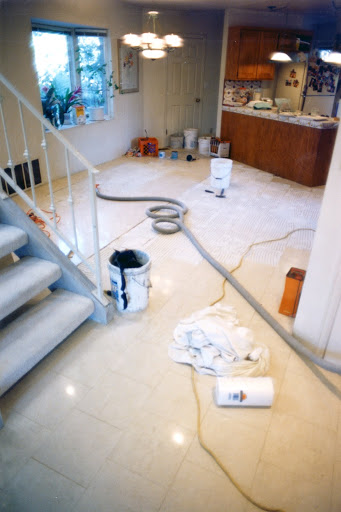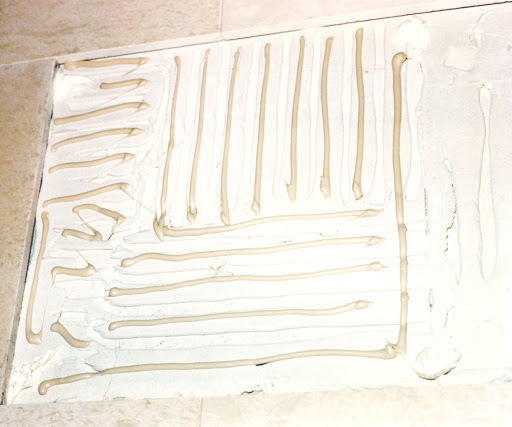Written by Mike Marsoun, Published in “Stone World Magazine”, May 1996, pg. 106
Anyone that has been in the stone business over six months has more than likely experienced a “bond deficient” stone floor (and a frustrated customer waiting to hear some very bad news).
 Failing floor installations can result due to a number of factors: insufficient bond between stone and mortar; insufficient bond between mortar and sub-floor; insufficient mortar reinforcement; bad materials or material usage; sub-floor’ etc. There are many possibilities that people are quick to point out. Often the problem isn’t noticed by a customer until ears down the line when recovering their loss could be difficult.
Failing floor installations can result due to a number of factors: insufficient bond between stone and mortar; insufficient bond between mortar and sub-floor; insufficient mortar reinforcement; bad materials or material usage; sub-floor’ etc. There are many possibilities that people are quick to point out. Often the problem isn’t noticed by a customer until ears down the line when recovering their loss could be difficult.Once the damage is done, the owner is faced with restoring the floor if possible. One tile should be removed to determine where the system failed above or below the mortar bed. If the grout is shedding extensively, and there is a distinct buzz upon sounding the tiles, the bond is most likely broken at the stone. This is usually the case. In this instance there are some repair methods that have been proven to work.
Ellen Lynch of MarbleLife reports a method of epoxy injection. In the method, holes are drilled through the stone in noticeably hollow or loose areas. Then a flowing epoxy is injected with a syringe into the void beneath the stone. The epoxy is pulled along into the void by a vacuum held over another hole in the direction of the desired flow. The epoxy dries and the area is solid. The drilled holes are then filled with a epoxy of matching color, and the work is complete.
 The method I have used involves pulling up the stones and re-fixing. Stones are removed with a suction cup and hand tools. If the removed stones are sound they are numbered to their place and marked with numbers pointing north. The edges are scraped free of grout and the stones set aside. Since broken pieces need to be replaced with new stones, purchase a percentage of stones before work starts and put another percentage on hold, depending on the integrity of the material. On some floors you can save every piece, a realistic goal with granite.
The method I have used involves pulling up the stones and re-fixing. Stones are removed with a suction cup and hand tools. If the removed stones are sound they are numbered to their place and marked with numbers pointing north. The edges are scraped free of grout and the stones set aside. Since broken pieces need to be replaced with new stones, purchase a percentage of stones before work starts and put another percentage on hold, depending on the integrity of the material. On some floors you can save every piece, a realistic goal with granite.Once stones are removed, the mortar bed should be vacuumed perfectly clean of dirt and grout pieces. The mortar bed is then prepared using construction adhesive (ie. Liquid Nails, WB) as the bond coat by way of a caulking tube, using thin beads. A teaspoon-sized spot of stone epoxy is then applied to each corner and center. The mastic holds the stone down regardless of cracks in the mortar bed, and the epoxy keeps the stone from moving. The stones are then replaced in their designated space with the arrows pointing north indicating the original direction of the stone. This is very important or the stones will not lay flat. Floors that are done this way can be walked on ½ hour after the last piece is set and can receive heavy traffic the day after and for years to come.

